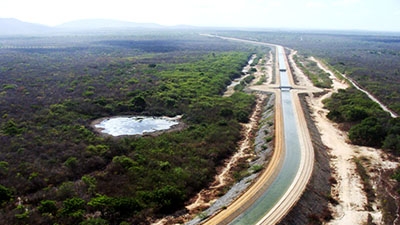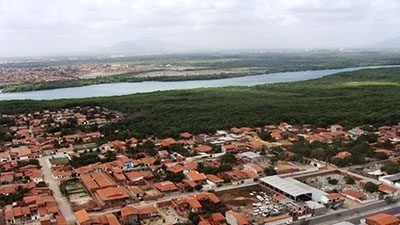Challenge
Most of the state of Ceará is in the semi-arid “sertão.” where mean rainfall is less than 800mm per year. However, rainfall variability is among the highest in the world, falling mostly in the first half of the year, while the second half is generally dry. Ceará is among the poorest in Brazil, as the semi-arid climate and its recurrent droughts traditionally allowed only precarious subsistence farming and extensive animal grazing. These conditions precipitated major outward migration. The rapid growth of the Fortaleza Metropolitan Region during the last 70 years was due in large part to this rural exodus.
Reservoirs were the traditional response to droughts for more than 100 years, but they were built and operated in an ad-hoc fashion. Until the early 1990s, storage was insufficient and managed inadequately, without integration within or between river basins, and water distribution was lacking.
In addition to the state’s low levels of human development, providing water to the increasing population of Fortaleza Metropolitan Region was a serious challenge. The adoption of new water management policies between 1987 and 1996, before the National Water Law (1997), helped make Ceará the pioneer of water resource management in Brazil.
The project is the third Bank-financed project to assist the state of Ceará in the implementation of modern policies, planning, and management tools to overcome the impact of recurrent droughts.
Solution
This project sought to:
- Increase sustainable water supplies for multiple uses.
- Improve efficiency of the integrated water resources management system.
- Decrease vulnerability of poor populations to cyclical drought through improvements in the institutional, legal and administrative managerial frameworks with emphasis on participatory management mechanisms.
- Rehabilitate and construct new hydraulic infrastructure aimed at the integrated management of river basins.
- Develop and consolidate sustainable cost recovery, management, operation and maintenance of systems for hydraulic infrastructure.
- Integrate environmental policies with water management policies.
- Stimulate multiple uses, efficient and shared management of Ceará’s water resources through organization and strengthening of river basin committees and water user associations.
- Implement and propagate more effective water use and management technologies, and education, information and training of the general public and water users aimed at efficient water use, demand management, and reduction of waste.
- Promote improved management of soil and vegetation in tributary watersheds to enhance water conservation, minimize erosion and maximize natural water storage mechanisms.
- Advance the adequate management of critical micro-basins and groundwater resources, through increasing vegetated area, and controlling run-off and erosion, developing aquifer management and recharge zone plans.


